The Sicilian Mafia has been considered a creeping, unstoppable force, whose grip on the territory and the lives of honest citizens cannot be vanquished by the State. This aura of invincibility has taken legendary overtones, and often we see Mafia Dons being celebrated as folk heroes in film and fiction.
But what of the lawmen who gave all their energies, sanity, and lives to defeat this monster?
In today’s Biographics we will chart the rise, struggles and controversial methods of one of them. A little-known historical figure, at least outside his native Italy. A man who, in the early 1920s was pulled out of retirement for ‘one last job’: a mandate from Mussolini himself to crush the Mafia, whatever it took.
A man who largely succeeded in his task, only to be hindered by the very political structure who had given him full powers.
This is the story of Cesare Mori, better known as ‘The Iron Prefect’.
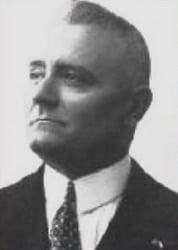
Making of a Lawman
On the 22nd of December 1871 a boy was born in Pavia, Northern Italy. His parents abandoned him at birth, and he was raised in the local orphanage, under the name of Primo Nerbi.
His natural parents acknowledged him only in 1879, and they changed his name to Cesare Mori.
A difficult start to life bred a young man accustomed to harsh and disciplined environments. Cesare enrolled in Turin’s Military Academy, and after a stint in the Army, he joined the Police. After serving in Northern Italy, the young officer was put to the test with a transfer to Sicily, in 1904.
This is when Mori first got first-hand knowledge of that criminal organization known as the ‘Mafia’ to outsiders, and to its members as ‘Cosa Nostra’: ‘our thing’ or ‘our own business’.
Mafia gangs had been around for at least 40 years. To oversimplify, they were first born as private security companies, protecting the interests of wealthy landowners. Gradually, they branched out into the very criminal activities they were supposed to fight: kidnappings, robberies, and cattle-rustling.
Eventually, they had established a monopoly of armed violence, mainly in rural Sicily. They exploited this position by imposing a crippling protection racket. They were virtually undisturbed in their activities, shielded by a network of corrupt officials and the ‘omertá’ of the common citizens.
Omertá is often described as a formalized code of silence. It is more of an ingrained habit, bred by generations of mistrust in public authorities and fear of criminal reprisals. Cesare Mori would not let himself be intimidated by mafia threats, nor was he discouraged by lack of cooperation. To him, mafiosi were just ordinary bandits, and they should be treated as such.
He distinguished himself by conducting several high-profile arrests in the province of Trapani, Western Sicily, but eventually he got on the wrong side of his superiors. They judged his methods to be too heavy handed, and frequently accused him of abuse of power.
Eventually, in January of 1915 he was transferred to Florence, where he was promoted to Deputy Commissioner.
However, a man of his skill could not be kept away from real action for too long.
At War with Bandits
In May of 1915, the Kingdom of Italy declared war on Austria-Hungary and entered WWI. Thousands of young Sicilians were called to arms, but many of them went AWOL and took to the hills, swelling the ranks of bandit gangs.
Not all these gangs were affiliated to Cosa Nostra, but they shared their methods and tight grip on the territory.
The Ministry of the Interior had the right man for the job: Deputy Commissioner Mori.
I will not describe all his actions, save for one, to give you an example of Mori’s strategy and tactics.
In 1916, the lawman set his sights on the gang led by Grisafi. It only included five bandits, but they were heavily armed and could count on a network of allies and informants.
Mori’s signature strategy consisted of two stages.
First, destroy the enemy’s supply and support network.
Second, surround the foe and force them into a firefight or into surrender. In the Grisafi case, Mori and his men descended upon the town of Caltabellotta, in southwestern Sicily, and rounded up some 300 allies of the bandits.
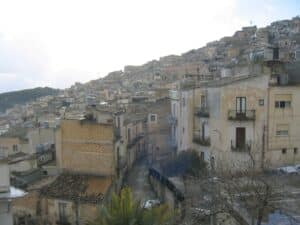
The outlaws, now isolated, made a huge mistake: they hoisted a black flag above their mountain hideout, signifying their will to fight on. Mori took up the gauntlet and launched a surprise attack, surrounding the enemy base.
When Mori entered their cave, he found that Grisafi and friends had escaped through a secret passage, leaving behind their horses and a military-grade arsenal.
The Deputy Commissioner was a capable sleuth. He ordered his men to set the horses free and to follow them. The habit-loving animals naturally rode to another location: a farmhouse, which turned out to be a second lair for the gang.
Time for stage two: Mori’s men surrounded the house at night, ready for a stealth action. But the outlaws spotted the police force and opened fire. An intense firefight ensued, in which Mori directed concentrated volleys of rifle rounds against the doors and windows of the farm.
The building was almost demolished by the bullets, but luckily no side suffered any casualty. Eventually, the gang surrendered.
This, and other successes, made Cesare Mori a household name and a hero celebrated by the press.
He even received a Silver Medal from the military, and a promotion to Commissioner.
Yet, the lawman was far from happy. He knew he had dealt a crippling blow to some of the foot-soldiers fighting for Cosa Nostra … But he was also aware that the criminal organizations leaders and patrons were still hiding in high places: “The true lethal blow to the Mafia will be given when we are able to make roundups… in prefectures, police headquarters, employers’ mansions and ministries.”
At War with Blackshirts
Following his promotion, the Commissioner was transferred again, ending up in Bologna, where he served from February 1921 to August 1922.
On that occasion, he was appointed Prefect. In the Italian civil service, the Prefect is the representative of the government for a Province. While not a member of the Police forces, a Prefect has the authority to coordinate their strategy and activities.
Mori landed in Bologna at the worst possible time.
The Fascist Party was on the rise. Its members, organized in paramilitary squads of Blackshirts, roamed Bologna and its suburbs engaging in violent action against communists, workers on strike, and left-leaning farmers.
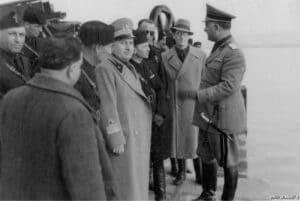
Elsewhere, police forces turned a blind eye to Fascist street violence. They were seen as the ‘lesser evil’, a necessary nuisance which could contain and prevent a communist uprising in Italy.
But Mori would not have any of that.
On the 25th of May, some hundred Blackshirts led by former Navy Captain Cavedoni laid siege on the town of Santa Viola, attacking farm labourers and factory workers with hand grenades.
The Prefect’s response was decisive: he sent a detachment of Carabinieri, a militarised police force akin to the French Gendarmes. Mori’s men dispersed the Fascists, arresting many of them, but Cavedoni got away. Later that night, his body was found in Bologna, torn apart by a grenade.
His fellow party members alleged he had been killed by the communists and bayed for blood. But a police enquiry led by Mori found that Cavedoni had died by accident, while assaulting a farmers’ cooperative. The local section of the National Fascist Party intensified their actions against communist and socialist organizations. But most of all, they declared war on the Prefect.
20,000 Blackshirts converged on Bologna, demanding for Mori to resign.
The tough lawman responded by barricading the Prefecture and the police headquarters,resisting attacks from the militiamen and political pressure to quit his job. Eventually, in August, the Ministry of the Interior transferred Mori to Bari, Southern Italy. The Blackshirts had now free rein over Bologna.
A few weeks later, at the end of October 1922, the Fascist Party staged their March on Rome. King Victor Emmanuel III appointed Benito Mussolini, ‘il Duce’, as Prime Minister of a new coalition Government.
With the new cabinet in place, Cesare Mori was quickly dismissed and sent to an early retirement in Florence.
But it wouldn’t last for long.
Carte Blanche
In May of 1924, Benito Mussolini traveled to Sicily for an official visit.
He and other Party leaders were aware of the blight of Cosa Nostra. Their political program was founded on law and order; therefore, they could not tolerate the presence of large criminal organizations. And yet, the mafia had backed Fascists and their allies in local elections – a common practice inherited from previous political systems.
The visit was the occasion for the/il Duce to draw a clean slate and sever unholy alliances between local administration and crime.
On the 9th of May, he declared in a speech:
“It should not be tolerated any longer that a few hundred delinquents overwhelm, impoverish and damage a magnificent people such as this!”
The last straw was drawn by Mayor Don Francesco Cuccia of a small town near Palermo. The politician – and mafia boss – glanced at Mussolini’s bodyguards and told the Duce: “You are with me; you are under my protection. What do you need all these cops for?”
The leader was furious. How could a two-bit ‘Don’ believe he could be above his law? How could he believe his crime syndicate to be a replacement for the State?
Mussolini resolved to crush Cosa Nostra.
He needed a lawman with a proven track record and knowledge of the territory.
More importantly: he needed someone who would not be intimidated by a powerful opponent. Well, how about one of the few Prefects who had actively opposed the rise of Fascism?
This is when Cesare Mori received the call. Retirement was over.
On the 2nd of June of 1924, Cesare Mori was appointed Prefect for the mafia-riddled province of Trapani. Mussolini gave him clear instructions: “You have carte blanche. The authority of the state must absolutely be re-established in Sicily. If the laws still in force hinder you, this will be no problem. We will draw up new laws”
Mori immediately applied stage one of his strategy: undermine the power base of the Mafia.
In this specific case, he focused on weakening the military strength of the local gangs. First, he withdrew all permits to carry firearms. Then, he heavily regulated the recruitment of the ‘campieri’.
These were armed watchmen looking after large estates, many of whom were hired as foot soldiers by Cosa Nostra. Now, all ‘campieri’ had to be scrutinized and appointed by a provincial commission. Then, Mori went on the attack, targeting the most profitable criminal enterprise around Trapani: cattle-rustling.
Traditionally, stolen cattle were butchered and sold on the black market. But in recent years, the Mafia Dons had found that they could make more money by holding large herds at ransom.
Mori reasoned that rustlers had to look after the kidnapped animals. Traveling across the countryside on horseback, Mori identified the likely routes where criminals could find fresh water, food, and shelter for the cattle.
With accurate maps in hand, the police and Carabinieri were able to ambush hundreds of cattle-rustlers red-handed.
The Prefect continued to repress organized crime well into 1925. His methods were harsh, even brutal. So much so that a delegation of Fascists from Trapani wrote a petition to Mussolini, demanding that Mori be transferred somewhere else.
The petition ended up in the bin, and its signatories were all expelled from the Party.
The Prefect not only continued to operate but was even promoted! On the 20th of October 1925 he was appointed Prefect of Palermo, the regional capital. As such, he would have authority to fight the Mafia across the entire island.
A Military Campaign
The Iron Prefect took to the task with a grand strategic plan. He was to conquer the hearts and minds of Sicilians, to restore their trust in institutions, and demolish the sense of fear of respect which ordinary citizens placed on mafiosi.
On the operational level, he would approach the task as a military campaign.
He assembled his army, which he dubbed ‘Inter-provincial police squads’.
This was a force of some 800 policemen and Carabinieri, with jurisdiction over the whole of Sicily and answering only to him. He took great care in recruiting officers who were local to the mafia-infested areas, so that they could easily blend in and collect intelligence.
The ’Inter-provincial police’ would target one town, village or entire district at the time. First, undercover officers identified the local mafiosi and their allies. Then, they left the area allowing for the waters to quiet down.
In the meanwhile, uniformed officers surrounded and cordoned off the area of operations. Finally, Mori’s men swept in, swiftly carrying out massive round ups which resulted in hundreds of arrests.
This method required the targeted criminals to occupy the same area at the same time. Should this not happen naturally, Mori resorted to a shrewd tactic.
He had realized that gangs in the provinces relied for strategic direction on the Palermo families, the so-called ‘dome’. Exploiting this fact, he forged messages from the ‘dome’, asking subordinates to meet in a secret location.
These meeting places were not secret to the Inter-provincial squads, who descended upon their quarry in force. When possible, the Prefect refrained from open firefights with the outlaws. He always preferred to confiscate their goods and arrest their network of allies and families, thus forcing them into surrender.
Such methods erred on the heavy-handed side, resulting in the arrest of innocent civilians and destruction of their property. Mori even encouraged his younger policemen to move in with the wives of bandits on the lam, threatening their honor.
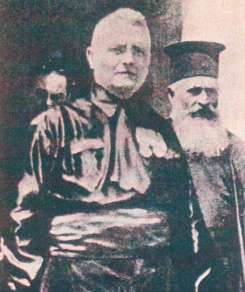
This was an affront that no full-blooded Sicilian would tolerate, and many ‘made men’ left their lairs with vendettas in mind, only to be immediately arrested.
In some cases, though, arrests were not that easy. Leaders and their gangs did not fall into Mori’s traps and opened fire, resulting in pitched battles with the police forces.
For those occasions, Mori had issued specific instructions to his men. Should the confrontation happen at night, shoot only if absolutely necessary. They had to exploit darkness and stealth to creep in onto their targets.
If shots were fired during the day, it was a different story.
Mori’s men had been trained to encircle the enemy in tight formation whilst keeping cover, and then open fire in a concentrated fashion.
This approach stunned the outlaws on most occasions, leading them to accept surrender. But some Mafiosi could boast remarkable arsenals and had no qualms in firing back with Mauser rifles, heavy machine guns, or hand grenades.
Heavy casualties were suffered on both sides.
But enough of theory, let me give you a practical example: the siege of the town of Gangi,
Mori’s most celebrated accomplishment.
This effective yet heavy handed operation would earn him the title of ‘Iron Prefect’, bestowed by the national press.
Under Siege
At the end of 1925, the Prefect had planned to score a spectacular success, to increase the prestige of his forces and show to Sicilian people that the State could be relied upon. On the 1st of January 1926, the Iron Prefect chose the site for his pitched battle: Gangi, within the Palermo province, home to a gang 130 strong.
Mori first ordered his squads to surround a circular area around Gangi, with a 20 km radius. As he expected, with the police and winter cold creeping in, many suspects flocked to the town.
Once this happened, the force moved closer to the town, occupying the farms owned by the mafiosi and their supporters, confiscating goods and slaughtering cattle.The bandits felt the noose tighten and went into hiding, occupying well-stocked, well-concealed lairs underneath street level.
At this stage, Mori received reinforcements from Palermo, which included units of his old Blackshirt foes. With this formidable force, Mori and his right-arm man Police Commissioner Spano completely cordoned off Gangi.
The Prefect sent a telegram to the Mayor, which was relayed to the inhabitants via a town crier:
“I summon the fugitives and bandits who are in your territory to give themselves up within twelve hours, on the lapse of which I shall proceed to extreme measures”.
The ultimatum went unheeded, and so came the measures.
More animals were slaughtered and sold to the townsfolk at bargain prices.
All the wells supplying Gangi with water were shut down. And many houses belonging to the mafiosi were occupied by Mori’s and Spano’s squads. There were even allegations that these men raped the wives and daughters of the fugitives.
The locals, while not happy with what amounted to a military occupation, started to lose respect for those ‘made men’ whom they had feared and supported until just a few days earlier.
After 10 days of tense stand-off, one by one the mafiosi of Gangi surrendered to the man the press called the “Iron Prefect.” In his memoirs, Mori describes that the citizens of Gangi burst into a “Homeric burst of laughter” mocking the fate of those legendary criminals.
The Fight Goes On
Following the victory at Gangi, the Iron Prefect replicated the approach in other mafia strongholds. In a subsequent round-up, the Inter-provincial squads locked their handcuffs on the blood-stained wrists of Don Vito Cascio Ferro, a high-ranking boss considered to be the inventor of the protection racket.
Mori also cracked down on a widespread practice in rural areas. Mid- and large-estate owners were cowed by mafiosi into renting out their lands and properties at ridiculously low prices. These lands remained largely unproductive, and landlords suffered heavy financial losses.
While not as exciting as a siege or a round-up, Mori’s instigation of a large-scale review of tenancy contracts ended up in these nefarious tenants being pushed out of the countryside.
But as Mori’s methods were praised by Fascist propaganda, his methods came under question for being too brutal and downright illegal. Once again, allegations landed on Mussolini’s desk that the Prefect and his men indulged in rape, torture and hostage taking.
Nonetheless, the Iron Prefect and Commissioner Spano pressed on with their crusade, backed by a third ally: the judiciary system.
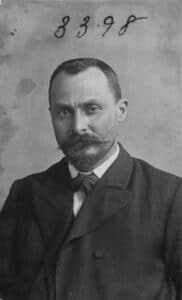
This was State Attorney and Head Prosecutor Luigi Giampietro, who collected thousands of witness accounts and was able to drag to court some pretty big fish…
For example, the Prefect and the Prosecutor built a dossier against a Fascist MP, Alfredo Cucco, who was accused of receiving kickbacks and favours from Mafia families.
The trial started in November of 1927 and Cucco was initially found guilty and was expelled from the Party.
This apparent victory, though, turned sour for the Iron Prefect.
The MP appealed his sentence, and the trial dragged on into 1929. In the meantime, Cucco’s dismissal created a vacuum of power within the Sicilian section of the Fascist Party, which was quickly filled in by large estate owners that were as cosy with the Mafia as their predecessor.
Meanwhile, pressure had grown for the Duce to remove Mori from his duties. Enough was enough.
Mussolini obliged and sweetened the pill with an appointment as Senator. And after all, it looked like the lawman had achieved his goals.
By 1929, 11,000 people were dragged to court. Many of them were innocent civilians, caught in the indiscriminate round ups of Mori’s squads. Many more were acquitted after key witnesses were threatened or killed. But 1,200 mafiosi were given sentences ranging from a few months to life. An unprecedented result!
More importantly, crime rates had plummeted.
When Mori took charge in 1925, the province of Palermo had recorded 268 homicides, 298 robberies and 45 acts of cattle-rustling.
In early 1929, there had been only 5 murders, 3 robberies and a mere two cases of stolen herds.
By looking at these figures, it looked as though Cosa Nostra had been thoroughly and utterly crushed. This was confirmed by a former mafioso, turned informant: “The Mafia hardly existed anymore. Mafiosi had a hard life. The music changed.”
In truth, the now Senator Mori had won many battles, but he had not won the war.
Most of the foot soldiers and many of the mid-level bosses had been wiped out. But the ‘Dome’ of top-level Dons had barely been touched.
Many of them had fled the country. People like Carlo Gambino and Joseph Bonanno relocated to New York, contributing to the rise of organized crime in the US.
What about the campaign to win the hearts and minds of Sicilians? Many civilians had indeed lost respect for criminals and had an increased sense of pride and trust in the Government. But Mori had failed to address the socioeconomic conditions which had pushed many youngsters into the arms of organized crime.
If anything, he had made them worse.
After landowners had been freed from the scourge of bargain-price leases, they took advantage of the situation by increasing rent by 1000 percent. This affected most rural workers and sharecroppers, creating a generation of impoverished and angry Sicilians, ripe for the taking.
Resurgence
In his later years, Senator Mori, continued to voice his views on Sicily and the Mafia. He insisted that the Government still had to invest more time and resources into solving the problems of that land, but few ears were eager to listen to his complaints.
The once lauded Iron Prefect died in relative obscurity on the 5th of July, 1942.
His memoirs were published in 1932 with the title ‘The Last Struggle with the Mafia’. Alas, the title proved to be wishful thinking.
On the 9th of July 1943, Allied forces landed in Sicily, driving out Axis forces in a matter of weeks. Following the invasion, the Allies appointed civil servants which did not have any ties to Fascism.
Unfortunately, many of them had ties to Cosa Nostra, or were members of the old families, returned from their exile in the States. In many cases, these former bosses and ‘made men’ had even collaborated with Anglo-American forces, providing useful intelligence and contacts.
The work of the Iron Prefect had been undone in a span of less than 15 years, and Cosa Nostra would return to plague the land, more powerful than ever.
Sure, Cesare Mori’s methods were controversial and many of his tactics would not find a place in a modern democracy. And four years of activity could not instigate the sweeping social reforms needed to eradicate organized crime.
But his story proves that even a cancer within a State, such as Cosa Nostra, can be effectively fought. Some of Mori’s methods, including targeting the wealth of bosses and staging large show trials would be picked up by later generations of lawmen, such as public prosecutors Giovanni Falcone and Paolo Borsellino, whose stories we may tell another day.

